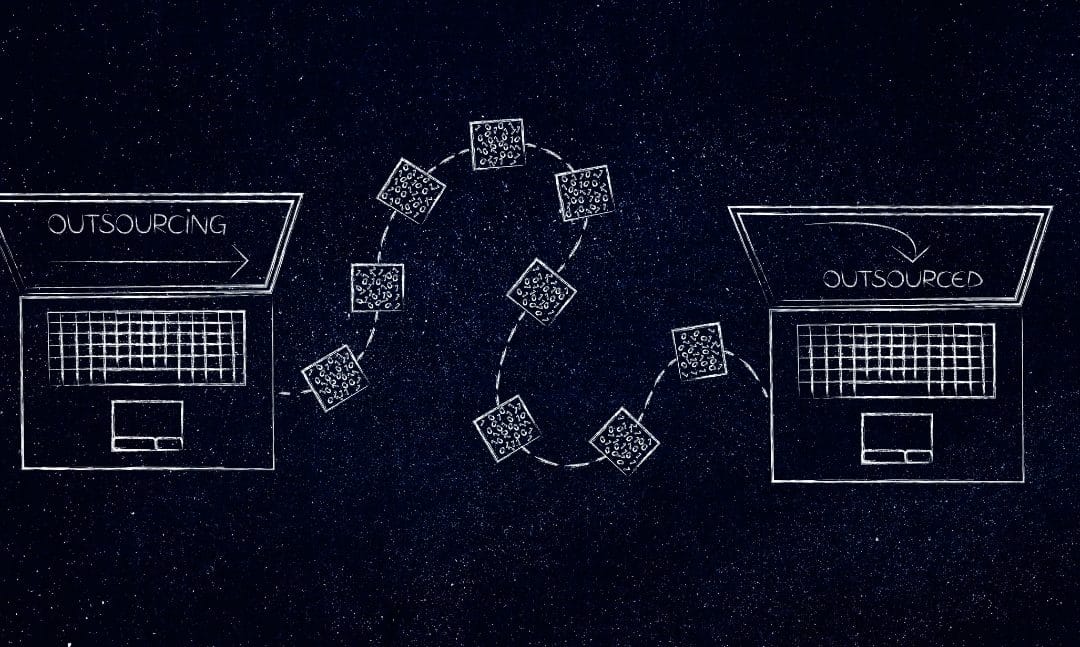In a world full of data, data analytics is the heart and soul of an operation. It’s what transforms raw data into something meaningful and valuable.
But, are there different types of data analytics? What are they used for? And how can they help businesses make smarter decisions?
In this article, we will break down the four main types of data analytics. We’ll talk about what they are, what they do, and why they’re important.
By the end, you’ll have a clear understanding of how data analytics can unlock powerful insights and drive success in any industry.
Let’s get started!

What is Data Analytics?
Before we get into the different types of data analytics, let’s take a step back and define what data analytics actually is.
At its core, data analytics is the process of examining raw data with the purpose of drawing conclusions about that information.
This might involve uncovering patterns, correlations, and trends, or it could be about applying statistical models to predict future events.
Overall, the goal is to turn data into valuable insights to help make better decisions.
Firstly, let’s check out something we call The Data Analytics Life Cycle.

The Data Analytics Lifecycle
The process of data analytics generally follows a certain structure, often referred to as the “data analytics lifecycle”:
Business Problem or Objective: This is where the process begins, with a specific business problem or objective that needs to be addressed. It could be anything from reducing customer churn to optimizing a marketing campaign.
Data Collection and Preparation: Once the problem is identified, the next step is to gather relevant data from various sources. This could be structured data from databases or unstructured data from social media, for example. The data is then cleaned and organized to ensure its quality and usability.
Data Analysis: This is the heart of data analytics. During this stage, various statistical and analytical techniques are applied to the data to uncover patterns, relationships, and other insights. This may involve the use of tools like data mining, machine learning, and predictive analytics.
Insights and Decision Making: The results of the analysis are then interpreted to generate actionable insights. These insights are used to inform decision-making processes within the organization.
Data Visualization and Communication: The insights are often presented in a visual format, such as charts or graphs, to make them easier to understand. This step is crucial for effectively communicating the findings to stakeholders.
Implementation and Monitoring: Finally, the insights are put into action, and the results are monitored over time. This step allows for the evaluation of the effectiveness of the decisions made based on the data analysis.
Throughout this lifecycle, data analysts or data scientists play a crucial role in extracting valuable information from the data.
They use a combination of domain knowledge, statistical expertise, and programming skills to make sense of the data and provide actionable insights.
Furthermore, with the explosion of big data and the increasing importance of data-driven decision-making, data analytics has become a key driver of success for organizations across industries.
Now that we clearly understand what data analytics is, let’s explore the 4 different types of data analytics.
4 Types of Data Analytics

Data analytics can be broadly classified into four main types:
- Descriptive
- Diagnostic
- Predictive
- Prescriptive.
Each type of data analytics has its own purpose and methods, and they are often used in combination to provide a comprehensive understanding of a particular data set or problem.
This section will explore these four types in detail, including their uses, methods, and real-world examples.
Let’s start with Descriptive Analysis.
1. Descriptive Analytics

Descriptive analytics is the simplest form of data analysis, and its primary goal is to summarize and describe data.
It helps us understand what has happened in the past, and it’s often the first step in the data analysis process. This type of analytics answers the question “What happened?”
Descriptive analytics techniques include:
- Data Aggregation: Combining data from multiple sources to provide a summary.
- Data Mining: Identifying patterns and relationships within a data set.
- Data Visualization: Presenting data in graphical formats to make it easier to understand.Data Summarization: Reducing the amount of data while maintaining important information.
You’ll find, descriptive analytics is commonly used in various applications, including sales reporting, customer segmentation, and performance metrics.
Let’s take a look at some examples of descriptive analytics in action.
Descriptive Analytics Examples
Sales Report: A company analyzes its sales data over the past year to identify trends, such as which products sell the best during specific times of the year.
Customer Segmentation: An e-commerce platform divides its customers into different segments based on their purchase history and demographic data to target them with personalized marketing campaigns.
Website Traffic Analysis: A marketing team uses Google Analytics to understand how visitors interact with their website, such as which pages they visit the most and where they come from.
Descriptive analytics provides valuable insights into what has happened, but it’s limited in its ability to explain why certain events occurred.
This is where the next type of data analytics, diagnostic analytics, comes into play.
Welcome to the world of Diagnostic Analytics.
2. Diagnostic Analytics

Diagnostic analytics aims to identify the reasons behind past events or performances. It helps understand what caused a particular outcome and is often used to answer the question, “Why did it happen?”
This type of analytics involves:
- Drilling Down: Going deeper into the data to find specific factors that contributed to an outcome.
- Root Cause Analysis: Identifying the fundamental reasons behind a particular issue or success.
- Correlation Analysis: Determining if there are relationships between different variables in the data.
Diagnostic analytics is valuable because it goes beyond describing what happened and helps uncover the underlying causes.
Let’s explore some examples of diagnostic analytics in action.
Diagnostic Analytics Examples
Sales Decline Investigation: A company uses diagnostic analytics to identify the reasons for a drop in sales for a specific product. They may find that a competitor launched a similar product or that there was a negative customer review.
Customer Churn Analysis: A telecom company analyzes customer data to understand why certain customers are leaving. They may find that customers with a particular service complaint are more likely to churn.
Website Performance Troubleshooting: A web developer uses diagnostic analytics to identify the cause of slow page load times on a website. They may find that a specific script is taking longer to execute than expected.
Diagnostic analytics provides crucial insights into the causes of past events, but it’s inherently backward-looking.
The next type of analytics, predictive analytics, helps look to the future and make informed forecasts.
Hello there, Predictive Analytics!
3. Predictive Analytics

Predictive analytics is a type of advanced analytics that uses historical data, statistical algorithms, and machine learning techniques to make predictions about the future.
It aims to answer the question “What is likely to happen?”
This type of analytics involves:
- Regression Analysis: Identifying and measuring the relationships between variables.
- Time Series Analysis: Examining data points collected at regular intervals to forecast future trends.
- Machine Learning Models: Using algorithms to learn from data and make predictions without being explicitly programmed.
- Risk Assessment: Evaluating potential future outcomes and their associated probabilities.
Predictive analytics is used in a wide range of applications, including financial forecasting, demand planning, and fraud detection.
Now, let’s take a look at some examples of predictive analytics in action.
Predictive Analytics Examples
Stock Price Prediction: A financial institution uses predictive analytics to forecast the future prices of stocks based on historical market data and other variables.
Energy Consumption Forecasting: A utility company analyzes historical energy usage patterns to predict future demand and optimize energy generation and distribution.
Credit Scoring: A bank uses predictive analytics to assess the creditworthiness of loan applicants by predicting the likelihood of default based on various factors.
Predictive analytics provides valuable insights into what is likely to happen in the future, but it’s important to note that these are probabilities, not certainties.
This is where the final type of analytics, prescriptive analytics, comes in.
4. Prescriptive Analytics

Prescriptive analytics is the most advanced form of data analysis, and it focuses on providing specific recommendations for action.
It goes beyond predicting what will happen and suggests the best course of action to achieve a particular goal. This type of analytics aims to answer the question “What should we do?”
Prescriptive analytics involves:
Optimization Techniques: Finding the best solution among a set of alternatives.
Simulation Modeling: Creating models to simulate different scenarios and their potential outcomes.
Decision Support Systems: Tools using data and algorithms to assistdecision-making processes.
Prescriptive analytics is used in areas such as supply chain management, healthcare, and resource allocation.
Let’s explore some examples of prescriptive analytics in action.
Prescriptive Analytics Examples
Supply Chain Optimization: A retail company uses prescriptive analytics to determine the most efficient distribution of products from warehouses to stores.
Personalized Medicine: A healthcare provider uses prescriptive analytics to recommend specific treatments for patients based on their genetic profiles and medical history.
Dynamic Pricing: An e-commerce platform uses prescriptive analytics to adjust prices in real time based on demand, inventory levels, and competitor pricing.
Overall, prescriptive analytics provides actionable insights and recommendations, but it requires a high level of data maturity and sophistication.
Often, you’ll find that organizations start with descriptive and diagnostic analytics before progressing to predictive and prescriptive analytics.
How Are These Types of Data Analytics Used in Business?

Each data analytics type has its specific uses in the business world; let’s check out a collection of real-world use cases.
1. Descriptive Analytics in Business
Descriptive analytics is the foundation of data analysis and is the starting point for most organizations. It helps businesses understand what has happened in the past and provides key insights into their current state.
In business, descriptive analytics is used for:
Sales Reporting: Understanding sales trends, customer behavior, and product performance.
Performance Metrics: Tracking and analyzing key performance indicators (KPIs) to evaluate the success of various initiatives.
Customer Segmentation: Dividing customers into groups based on characteristics or behaviors to tailor marketing efforts.
Descriptive analytics is crucial for setting the stage for more advanced types of analytics. It provides the context and baseline from which businesses can confidently move forward.
2. Diagnostic Analytics in Business
Diagnostic analytics is the next step after descriptive analytics. It goes beyond what has happened to understand why it has happened. In business, diagnostic analytics is used for:
Root Cause Analysis: Identifying the underlying factors contributing to a particular outcome or problem.
Performance Troubleshooting: Investigating issues with processes or systems to improve efficiency.
Customer Churn Analysis: Understanding the reasons why customers leave and finding ways to reduce churn.
Diagnostic analytics helps businesses uncover the reasons behind their performance and make informed decisions about how to address issues or improve results.
3. Predictive Analytics in Business
Predictive analytics takes data analysis to the next level by using historical data to make informed predictions about the future. In business, predictive analytics is used for:
Demand Forecasting: Estimating future demand for products or services to optimize inventory and resources.
Risk Assessment: Identifying potential risks and their likelihood to help in proactive risk management.
Sales and Revenue Projections: Predicting future sales and revenue based on historical trends and market conditions.
Predictive analytics empowers businesses to make more accurate forecasts and anticipate potential outcomes, giving them a competitive edge in the market.
4. Prescriptive Analytics in Business
Prescriptive analytics is the most advanced type of analytics, and it provides specific recommendations for action. In business, prescriptive analytics is used for:
Optimization: Finding the best course of action to maximize efficiency and results.
Resource Allocation: Determining the most effective allocation of resources such as time, money, or personnel.
Dynamic Pricing: Adjusting prices in real-time based on demand and market conditions.
Prescriptive analytics enables businesses to make data-driven decisions and take proactive steps to achieve their goals and stay ahead of the competition.
Now, let’s run through some common questions.
Final Thoughts

The power of data analytics lies in its ability to transform raw data into valuable insights that drive better decision-making.
By understanding the different types of data analytics and their applications, businesses can unlock the potential of their data and gain a competitive edge in today’s data-driven world.
Whether it’s using descriptive analytics to understand the past, diagnostic analytics to uncover the reasons behind events, predictive analytics to make informed forecasts, or lastly, prescriptive analytics to take proactive action, each type plays a critical role in the data analysis process.
Ready to dive into AI-powered content? Learn more about learning with AI in the video below:
Frequently Asked Questions
What are the 4 types of data analytics?
There are four main types of data analytics: descriptive, diagnostic, predictive, and prescriptive analytics. Descriptive analytics focuses on summarizing data, diagnostic analytics on explaining why something happened, predictive analytics on forecasting future events, and prescriptive analytics on recommending specific actions.
What are the 3 types of analytics?
The three types of analytics are descriptive, diagnostic, and prescriptive. Descriptive analytics focuses on summarizing data, diagnostic analytics on explaining why something happened, and prescriptive analytics on recommending specific actions.
What are the 5 types of data analytics?
The five main types of data analytics are descriptive, diagnostic, predictive, prescriptive, and discovery analytics. Descriptive analytics focuses on summarizing data, diagnostic analytics on explaining why something happened, predictive analytics on forecasting future events, prescriptive analytics on recommending specific actions, and discovery analytics on identifying new patterns and insights.
What are the 4 levels of analytics?
The four levels of analytics are descriptive, diagnostic, predictive, and prescriptive. Descriptive analytics focuses on summarizing data, diagnostic analytics on explaining why something happened, predictive analytics on forecasting future events, and prescriptive analytics on recommending specific actions.
What is descriptive data analytics?
Descriptive data analytics is the process of summarizing data to gain insights and understand patterns. It involves organizing, visualizing, and interpreting data to provide a clear picture of what has happened in the past.
What is predictive data analytics?
Predictive data analytics is the process of using historical data, statistical algorithms, and machine learning techniques to forecast future events or trends. It involves analyzing data to identify patterns and make predictions about what is likely to happen.











